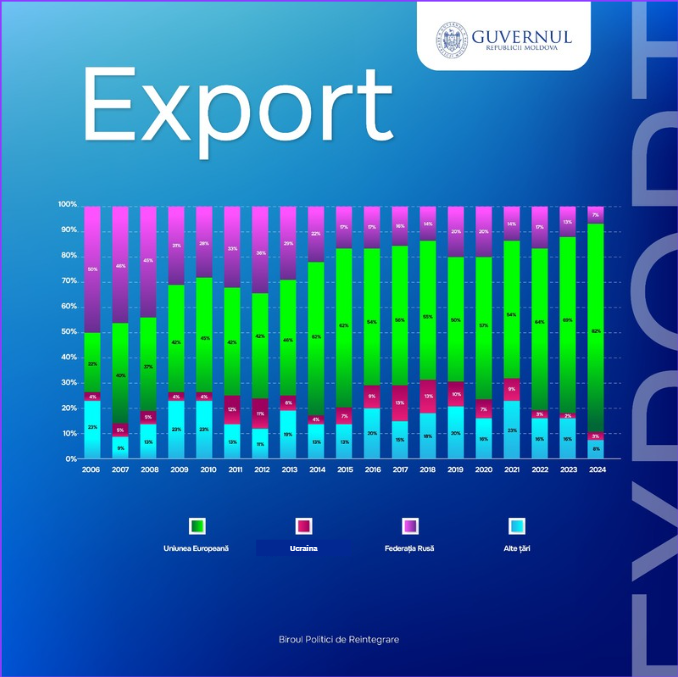The dynamics of the economic integration of the Transnistrian region of the Republic of Moldova into the European Union

Between 2006 and 2024, the Transnistrian region underwent a significant shift in trade orientation, reducing its dependence on the Russian Federation and strengthening its integration into the European Union (EU) market.
In 2006, exports from the Transnistrian region to the Russian Federation amounted to €128.3 million, compared to only €56.8 million to the EU market. The shift began in 2007, with the accession of Romania and Bulgaria to the EU, which facilitated the region's access to the European market. That year, exports to the EU surpassed those to the Russian Federation for the first time, reaching €197 million.
A defining moment was the region's inclusion in the EU's Autonomous Trade Preferences regime in 2008, followed by its integration into the EU-Moldova Deep and Comprehensive Free Trade Area (DCFTA) in 2016. This allowed companies operating within the legal framework of the Republic of Moldova to access the European market without tariffs or quotas. Despite the unresolved political status of the region, many exporters from Transnistrian region adapted to EU standards in order to maintain access to this market.
In contrast, exports to the Russian Federation saw a steady decline, from a peak of €252.9 million in 2008 to just €21.1 million in 2024. The main contributing factors were geopolitical instability and disruption of trade chains, especially following Russia's invasion of Ukraine in 2022.
Exports to the EU continued to grow, exceeding €320 million in both 2021 and 2022. Overall, the region has economically reoriented toward the West, driven by the trade advantages offered by the EU and the increasing risks associated with “traditional” trade relations with the Russian Federation.
The same trend is evident in the structure of imports into the Transnistrian region. The volume of imports rose significantly from €153 million in 2016 to €740 million in 2021. This evolution reflects both real trade growth and the inclusion of previously unreported shipments.
Thus, we can conclude that:
The EU has become the main supplier, with imports increasing from €32.7 million (2006) to nearly €380 million (2023);
Imports from Ukraine rose significantly after 2017, peaking at €144 million in 2018;
Imports from Russia sharply declined after 2019 amid geopolitical tensions;
Other countries have consolidated their share, reflecting a diversification of supply sources.
This development confirms a lasting reorientation of the region toward European markets, as well as the major impact of geopolitical realities on economic activity in the Transnistrian region. At the same time, the region’s shift toward the EU market underscores a trend of economic integration with the European community and a reduction in dependence on the Russian Federation.
